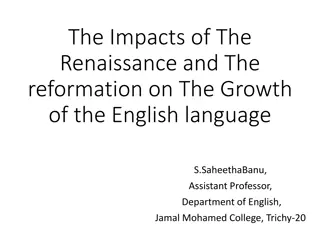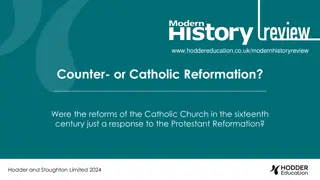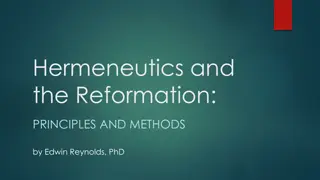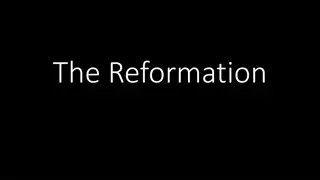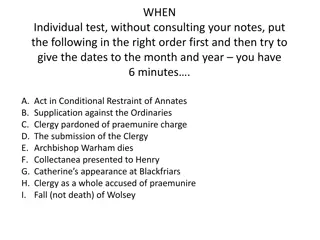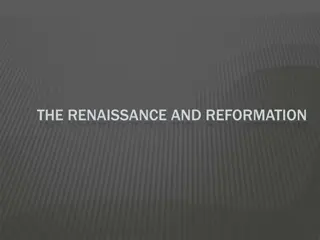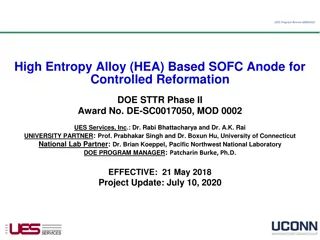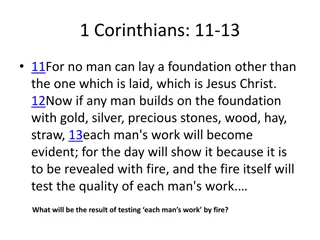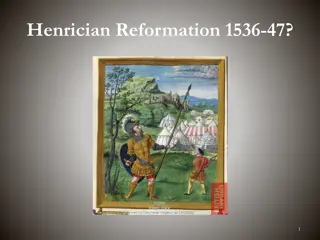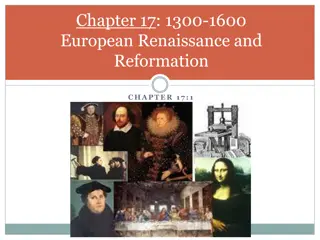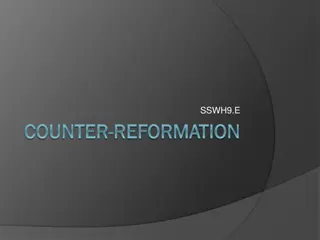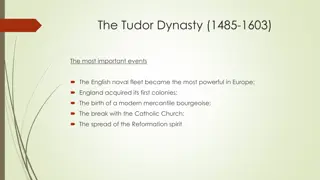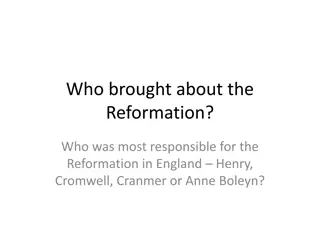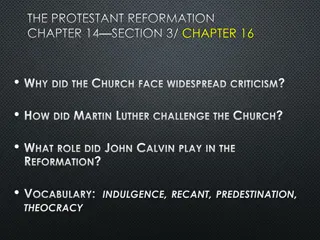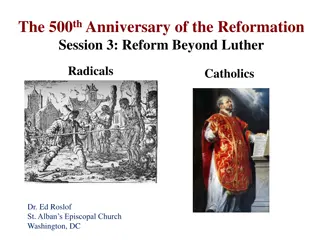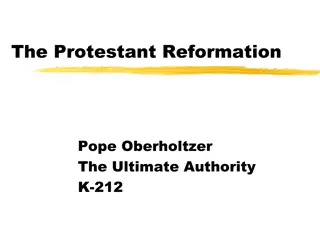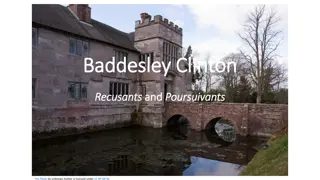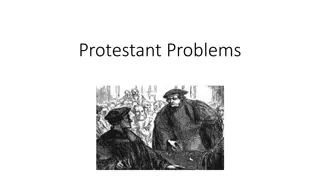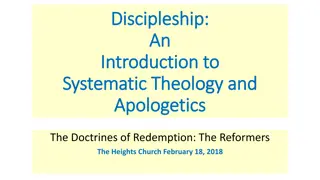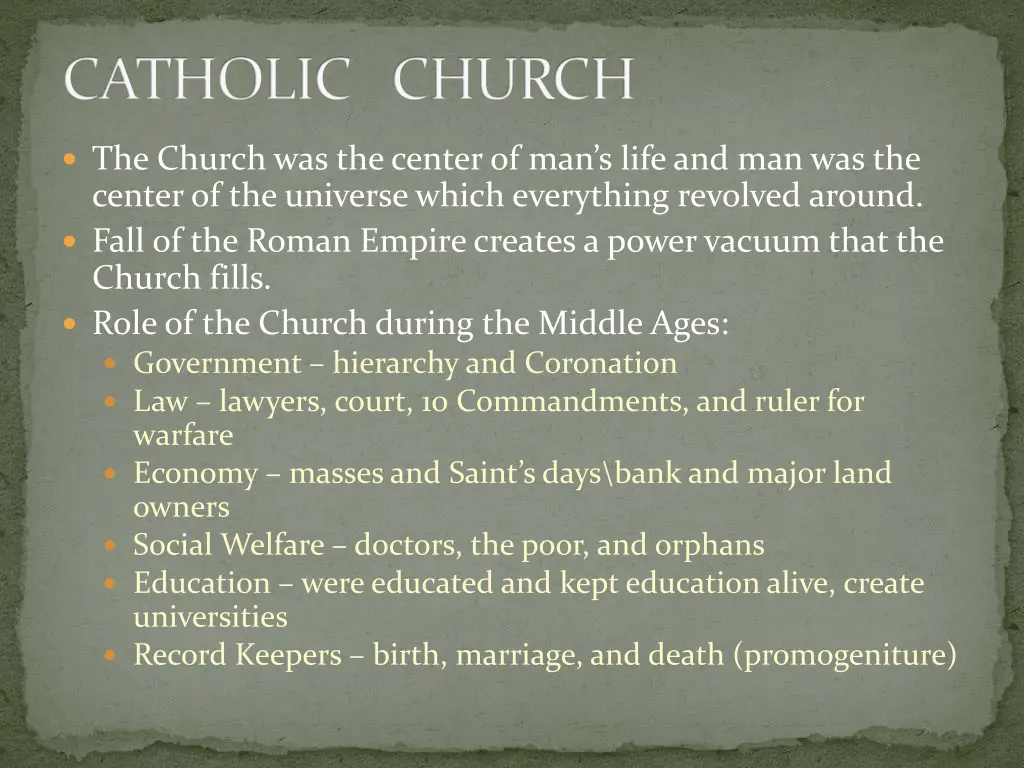
Impact of the Renaissance Movement on the Catholic Church
Explore the transformative journey of the Catholic Church during the Middle Ages and the Renaissance period, from being the focal point of society to facing challenges and reforms. Discover how figures like Martin Luther initiated a religious revolution that led to the rise of Protestantism and changed the religious landscape of Western Europe.
Download Presentation

Please find below an Image/Link to download the presentation.
The content on the website is provided AS IS for your information and personal use only. It may not be sold, licensed, or shared on other websites without obtaining consent from the author. If you encounter any issues during the download, it is possible that the publisher has removed the file from their server.
You are allowed to download the files provided on this website for personal or commercial use, subject to the condition that they are used lawfully. All files are the property of their respective owners.
The content on the website is provided AS IS for your information and personal use only. It may not be sold, licensed, or shared on other websites without obtaining consent from the author.
E N D
Presentation Transcript
CATHOLIC CHURCH The Church was the center of man s life and man was the center of the universe which everything revolved around. Fall of the Roman Empire creates a power vacuum that the Church fills. Role of the Church during the Middle Ages: Government hierarchy and Coronation Law lawyers, court, 10 Commandments, and ruler for warfare Economy masses and Saint s days\bank and major land owners Social Welfare doctors, the poor, and orphans Education were educated and kept education alive, create universities Record Keepers birth, marriage, and death (promogeniture)
Essential Question: How did the Renaissance movement affect people s view on the Catholic Church?
Era of Reform Reformation: religious revolution in western Europe Income > salvation Popes are warriors & politicians Vices took precedence over morality Humanists response: Withdraw and rebuild
New Beginnings 1stBreak Germany Core of HRE 300 independent states Vatican sent Johann Tetzel to raise $$ Indulgences: pardons for punishment from sin Originally a reward German states: no restriction to sale of indulgences
Martin Luther Monk search for salvation Revelation: good deeds don t matter Inner faith in God only thing that matters Justification by grace through faith 95 Theses 1517 Public challenge of indulgences
Break From the Church Major issues with the Church Bible is sole religious authority Ceremonies could not make up for sins Popes & Bishops could not tell people what to believe Priests no role in salvation 1521 Pope Leo X declares Luther a heretic Excommunicated Charles V (HREmp) Imperial Diet Diet of Worms: Luther an outlaw Banned printing and sale of works Frederick the Wise (Elector of Saxony) Hides Luther Translates Bible to German
Protestantism Spread quickly German princes est Lutheran states Charles V: 1546 sent armies against Protestant princes Peace of Augsberg 1555: German rulers could establish any religion for their state Subjects didn t like it they could move
New Religions Sects: new religious groups no organized churches No authority, discipline, membership or rules Gathering of like minded individuals w/preacher Anglican Church England Henry VIII England leaves church b/c Henry wants a divorce Leave wife (Catherine of Aragon) for lady in waiting (Anne Boleyn) Parliament passes new church of England king as the head Married 6 times 1 son Edward VI
Calvinism John Calvin Switzerland 1536 The Institutes of the Christian Religion Faith in the Bible Predestination God already decided who will be saved The elect community followed highest moral standards Geneva theocracy: gov t ruled by religious w/god s authority Outlaw on Vices
The Spread of Calvinism Huguenot: French nobility that converted to Calvinism 1/3 became Calvinists Civil War Huguenots vs. Catholics 1562 1598 Henry IV Edicts of Nantes Freedom of worship / political rights Puritanism form of Calvinism
The Counter-Reformation Counter (Catholic) Reformation Attempt to return the church to emphasizing spirituality Clarify church doctrine Campaign to stop Protestantism Pope Paul III 1534-1549 Inquisition question heretics Keep Catholics in the church Pope Paul IV Index of Forbidden Books Books that were harmful to faith and morals
Council of Trent 1545 Church Leaders meet in Trent Met during 3 periods from 1545 1563 End abuses of indulgences Discipline within the clergy Emphasized the need for ceremonies People must depend on priests b/c God grants forgiveness through the church Salvation comes from ceremonies & faith Every person has free will
Soldiers of the Counter-Reformation Society of Jesus (Jesuits) Ignatius de Loyola founder 1534 1540 Pope Paul III recognizes Jesuits as an official order Followers Vows: chastity, poverty & obedience to the pope Most effective in spreading Catholicism Stressed education Combined humanist values w/Catholic doctrine
Results of Religious Upheavals 1530 s mid 1600 s Religious wars in France, Germany, Netherlands & Switzerland Interest in Education Jesuits worked to strengthen faith in school Protestants believed people found the Christian faith by studying the bible Reading and literacy become important Gov tal Power Increases Gov ts, like England, took responsibility for church leadership Papal powers decreased


